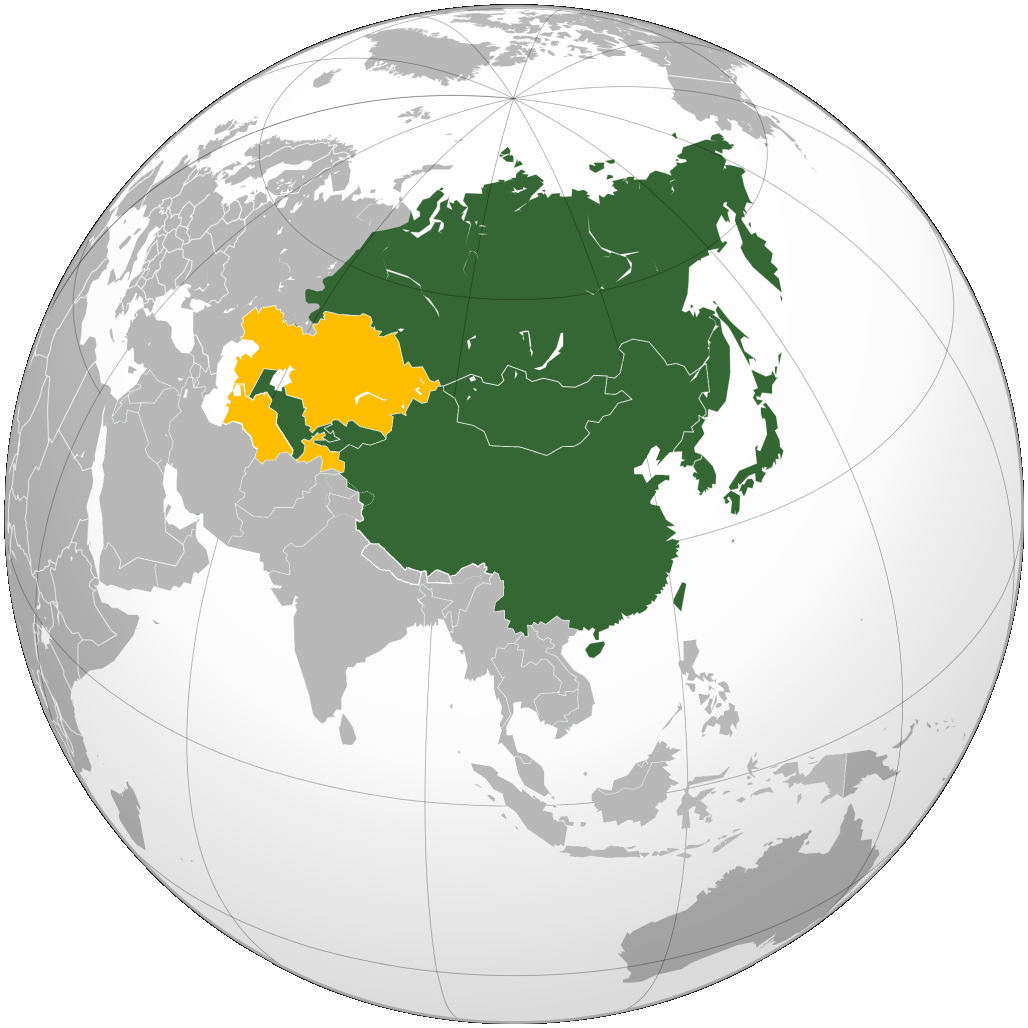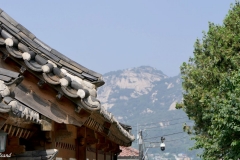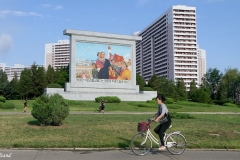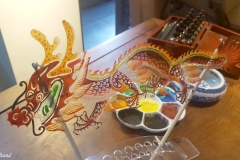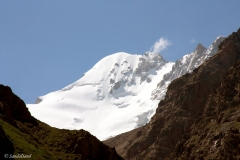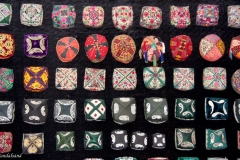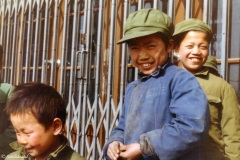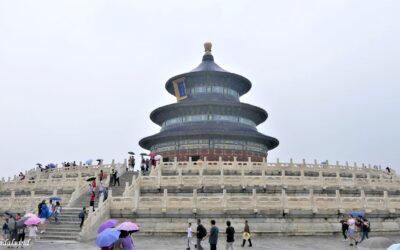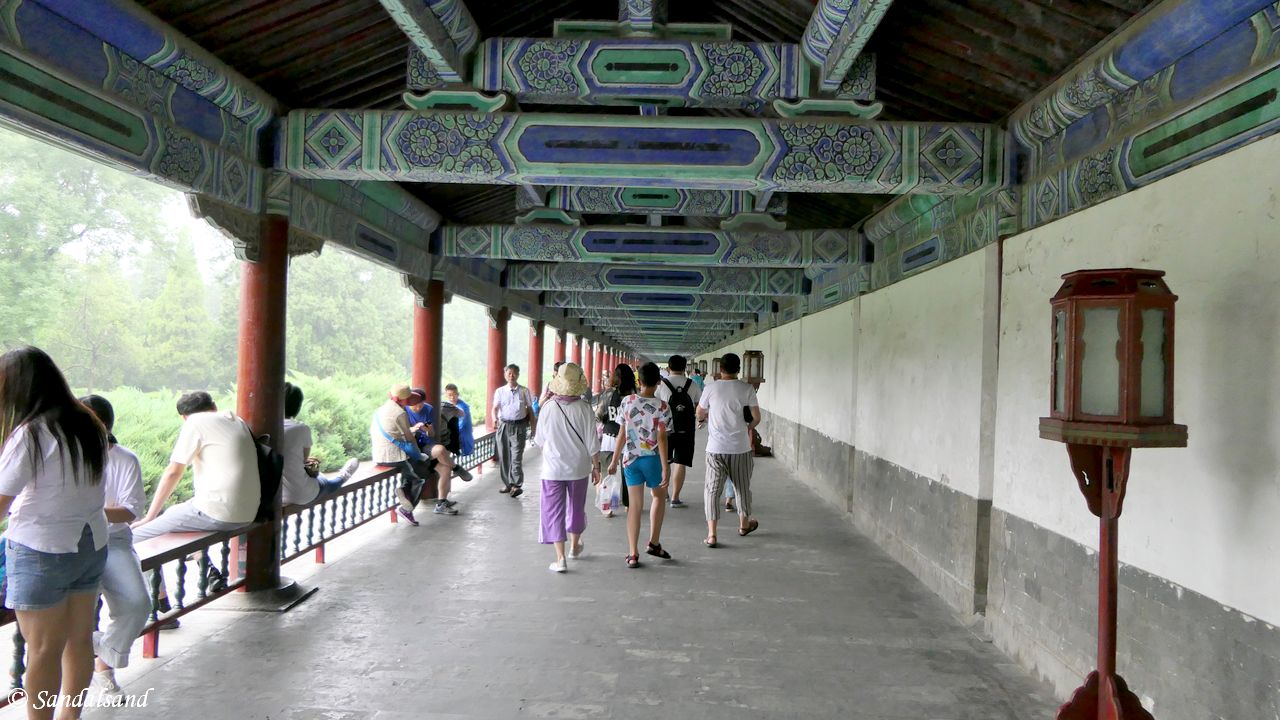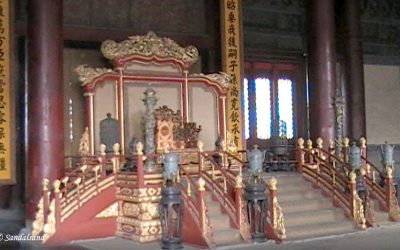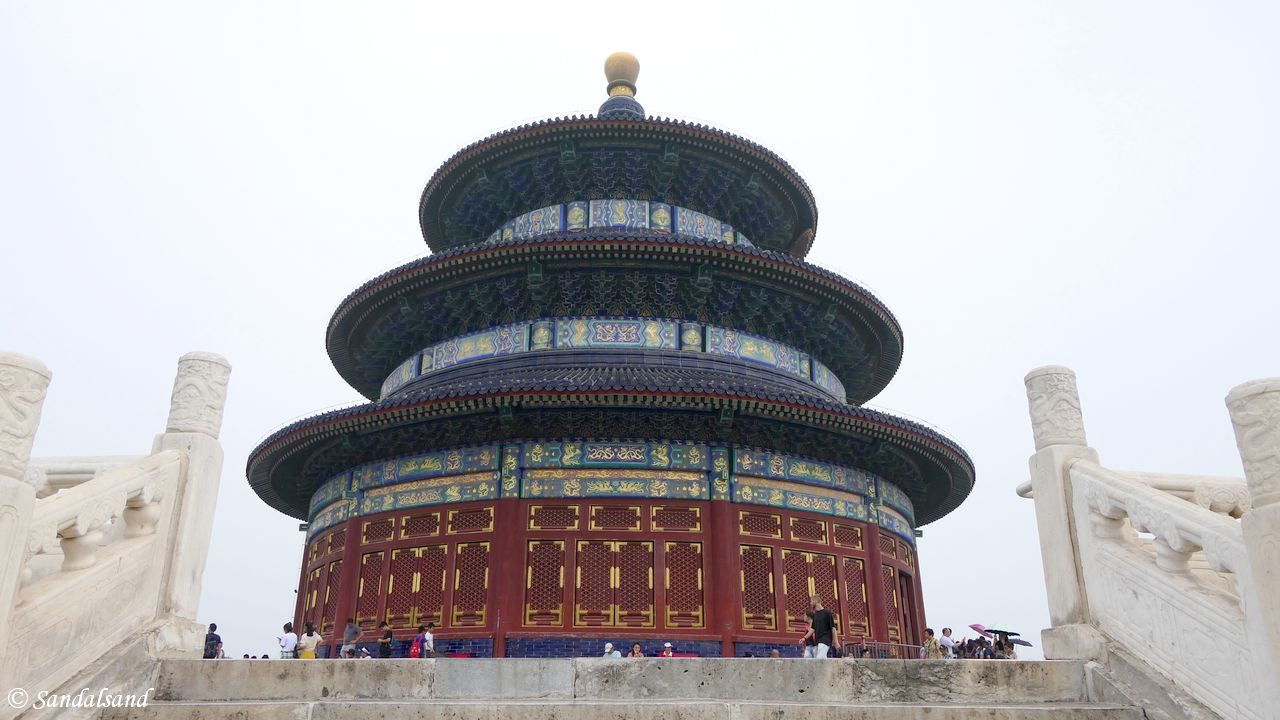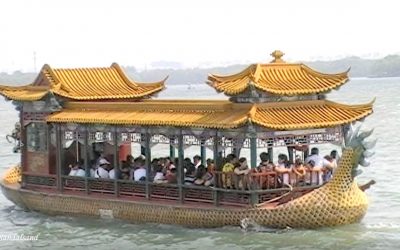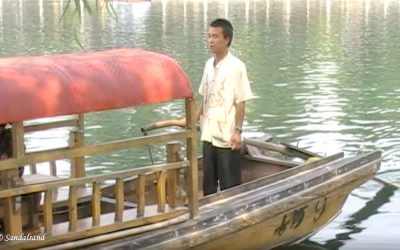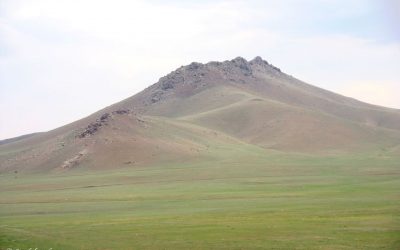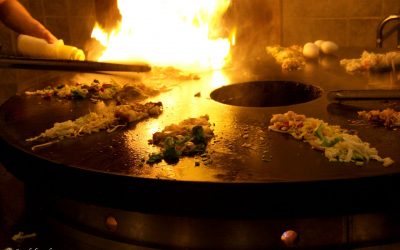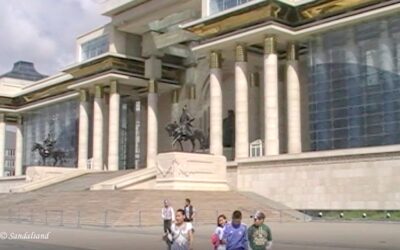Intro
Countries
Photos
Blog
Facts
Overall impressions
These women emerged from their houses at the Sera monastery in Tibet in 1985. They brushed their hair and aprons and asked us to take their pictures, so we did.
However, they were disappointed to learn that we didn’t have Polaroid cameras with instant processing and printing. They must have encountered or heard about tourists with such cameras before. No “travellers” had them, as I wrote about this scene many years ago.
In fact, this situation does not seem typical of East Asia in my opinion. People there are generally very up-to-date with technology. My impressions of this part of the world are certainly characterized by human curiosity and friendliness, combined with a traditional sense of hospitality. This holds true not only in remote places like Tibet and Mongolia but also in modern-day Japan.
An even stronger impression is the hectic way of life most East Asians lead. This is partly due to living in one of the world’s most densely populated regions, but I also believe there are cultural reasons for this.
To counteract this, it’s no surprise that the region has developed religious philosophies emphasizing deep meditation and mental balance. Today, East Asian society faces many challenging balancing acts: old and new; traditional and modern; work and leisure; manual and mental; stagnation and growth; poverty and prosperity; collectivism and individualism.
Countries
China | Japan | Kazakhstan | Kyrgyzstan | Mongolia | North Korea | Russia | South Korea | Taiwan | Tajikistan | Turkmenistan | Uzbekistan
There are three different regions under this heading. North Asia is by Wikipedia defined as Russia east of the Ural Mountains. East Asia is a larger region of six countries. Central Asia consists of five stan-countries.
Sandalsand has been to nine independent countries out of 12. The links above open lists with all articles from that particular country.
Taiwan’s status is a problem, in more than one way. I include it in this list for practical purposes.
Photo galleries
Open the box to view a multitude of picture galleries from Sandalsand’s travels in this region.
Click to show or hide
Open the box to view picture galleries from my travels in this region. I would recommend you to open a picture gallery in a new tab or window.
Distance tests a horse’s strength. Time reveals a person’s character.” (Chinese proverb)
Posts from North, Central and East Asia
Iron Wheels (1) Exciting train journeys
This is an introduction to exciting train journeys. I have registered my travels on a world map and the distance travelled on trains has been...
Ultimate highlights of Beijing
On a long day it is possible to discover many of the ultimate highlights of Beijing. This was also the end of a very long journey. This is article...
World Heritage #0881 – Temple of Heaven
Watch your step in the Temple of Heaven park, nothing is arbitrary, everything has a meaning. To those who understand. The UNESCO World Heritage...
VIDEO – China – Beijing (11) Forbidden City
This video takes you on a walk through the Imperial City (Walled City) and Forbidden City of Beijing. It goes from Tiananmen Square to Jingshan...
VIDEO – China – Beijing (10) Silk production process
This video about silk production is from a guided tour of a Beijing silk store showing the full production process. It includes the six larva...
VIDEO – China – Beijing (9) Temple of Heaven
This video is from a visit to the Temple of Heaven and the park. It is no. 881 on UNESCO's World Heritage List. The official name of the site is:...
VIDEO – China – Beijing (8) Temple of Heaven Park
Watch a video from an early morning workout in the Temple of Heaven Park in central Beijing. It has a number of very popular public exercise...
VIDEO – China – Beijing (7) Summer Palace
This is a short video from the Summer Palace in Beijing, the former summer residence of the Chinese emperors. "Summer Palace, an Imperial Garden in...
VIDEO – China – Beijing (6) Qianhai Lake
This video is from a walk along the pleasant Qianhai Lake in central Beijing, and the nearby area. According to Wikipedia Shichahai is a historic...
VIDEO – China – Beijing (5) Hutong
This video is from a redeveloped hutong neighbourhood in Beijing. Although quite new, they have the atmosphere of how people used to live in ancient...
VIDEO – China – Beijing (4) Great Wall at Mutianyu
This is a video from the Great Wall at Mutianyu. It is a restored section and very popular on a day trip from Beijing. According to Wikipedia,...
VIDEO – China – Beijing (3) Cloisonne factory
Here is a video from a cloisonné factory and store outside of Beijing. This is a technique for decorating metalwork objects with coloured materiel....
Beijing and the Great Wall
Read about some early impressions from Beijing, and then about a visit to the Great Wall. I had flashbacks to the last time I was in Beijing, more...
VIDEO – China – Beijing (2) Yonghe Lama Temple
This is a video from the Yonghe Lama Temple in central Beijing with its temple buildings, incense urns and worshippers. According to Wikipedia the...
On the train from Mongolia to Beijing
We were on a train from Mongolia to Beijing. After a very long stop at the border for passport checks and a change of wheels, we could finally leave...
VIDEO – China – Beijing (1) Ritan Park
This is a video from the peaceful Ritan Park in Beijing, on an early morning visit along Tai Chi Chuan practitioners. According to Wikipedia the...
VIDEO – China – Landscape
This video is from a northern China landscape to the tunes of the national anthem of China. Filmed from the train on the Trans-Siberian (-Mongolian)...
Pictures from Mongolia
This is a collection of Sandalsand's pictures from Mongolia, the result of a trip to different parts of the country. If you look up my articles from...
On the train from Mongolia to the Chinese border
A train from Mongolia to the Chinese border took us from Ulaanbaatar across the Gobi desert and a prolonged wait on the border for a change of...
VIDEO – Mongolia – Landscape
This is a video from a landscape in eastern Mongolia, and includes the tunes of beautiful Mongolian music. It was filmed from the train on the...
VIDEO – Mongolia – The Gobi desert
This video from the Gobi desert in Mongolia was filmed from the train on the railway from Ulaanbaatar to the Chinese border. It is accompanied by...
A day in Ulaanbaatar, Mongolia
On a day in Ulaanbaatar, the capital of Mongolia, we went to the Sukhbaatar Square, a Buddhist monastery, the Royal Palace, a folklore show and we...
VIDEO – Mongolia – Ulaanbaatar – Sukhbaatar Square
This is a video from Sukhbaatar Square, the central square in Ulaanbaatar, Mongolia. It was shot on the National Childrens Day, June 1st. First...
VIDEO – Mongolia – Ulaanbaatar – Buddhist monastery
This video is from a Buddhist monastery called the Gandantegchinleng Khiid. It is an important, active and central monastery in Mongolia's capital...
When you have completed 95 percent of your journey, you are only halfway there. (Japanese proverb)
A fact sheet
North Asia

- Region: North Asia
- States and territories: Russia
- Population (2017): 33,765,005
Geography
North Asia or Northern Asia, sometimes known as Siberia, is a subregion of Asia, consisting of the Russian regions of Siberia, Ural and the Russian Far East – an area east of the Ural Mountains. The region is sometimes also referred to as Asian Russia. The total population of North Asia is about 33 million. North Asia makes up more than 75% of the territory of Russia, but only 22% of its population, at a density of 2.5 people per km2.
Demography
There are around 38 million Russians living east of the Ural Mountains, the informal divide between Europe and Asia. Native Siberians are a minority in Siberia/North Asia due to the Russification process during the last three centuries.
The Buryats numbering 445,175 is the largest ethnic minority group in Siberia. There are 443,852 Yakuts (Russian Census of 2002) living in Siberia. According to the 2002 census there are 500,000 Tatars in Siberia, but 300,000 of them are Volga Tatars who settled in Siberia during periods of colonisation. Other ethnic groups that live in the region and make a significant portion are ethnic Germans and they number about 400,000.
Source: Wikipedia.
East Asia
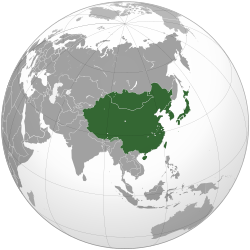
- Region: East Asia
- Area: 11,839,074 km2
- Population (2016): 1,641,908,531
- Density: 140/km2
- States: China, Japan, Mongolia, North Korea, South Korea, Taiwan
Geography
East Asia is the eastern subregion of the Asian continent, which can be defined in either geographical or ethno-cultural terms. Geographically and geopolitically, the region constitutes Greater China (Greater China consists of Chinese mainland, Hong Kong, Macau and Taiwan), Japan, Mongolia, North Korea and South Korea.
Religion
The region was the cradle of various ancient civilizations such as Ancient China, ancient Japan, ancient Korea, and the Mongol Empire. Major religions in East Asia include Buddhism (mostly Mahayana), Confucianism and Neo-Confucianism, Taoism, Ancestral worship, and Chinese folk religion in Mainland China, Hong Kong, Macau and Taiwan, Buddhism and Shintoism in Japan, and Christianity, Buddhism and Sindoism in Korea. Shamanism is also prevalent among Mongols and other indigenous populations of northern East Asia such as the Manchus.
Demography
At the present time East Asians comprise around 1.6 billion people, making up about 38% of the population in Continental Asia and 22% of the global population. The region is home to major world metropolises such as Beijing, Hong Kong, Seoul, Shanghai, Taipei, and Tokyo. Although the coastal and riparian areas of the region form one of the world’s most populated places, the population in Mongolia and Western China, both landlocked areas, is very sparsely distributed, with Mongolia having the lowest population density of a sovereign state. The overall population density of the region is 133 inhabitants per square kilometre, about three times the world average of 45/km2
Source: Wikipedia.
Central Asia
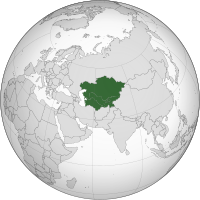
- Region: Central Asia
- Area: 4,003,451 km2
- Population: 69,787,760
- Pop. density: 17.43/km2
- Countries: Kazakhstan, Kyrgyzstan, Tajikistan, Turkmenistan, Uzbekistan
- Nominal GDP: $295.331 billion (2012)
- GDP per capita: $6,044 (2012)
Geography
Central Asia stretches from the Caspian Sea in the west to China in the east and from Afghanistan in the south to Russia in the north. The region consists of the former Soviet republics of Kazakhstan, Kyrgyzstan, Tajikistan, Turkmenistan, in addition to Uzbekistan. It is also colloquially referred to as “the stans” as the countries generally considered to be within the region all have names ending with the Persian suffix “-stan”, meaning “land of”.
By and large Central Asia has a population of about 70 million. It consists of five republics: Kazakhstan (18 million), Kyrgyzstan (6 million), Tajikistan (9 million), Turkmenistan (6 million), and Uzbekistan (31 million). Moreover, Afghanistan (35 million), which is a part of South Asia, is also sometimes included in Central Asia.
Demography and history
Otherwise Central Asia has historically been closely tied to its nomadic peoples and the Silk Road. It has acted as a crossroads for the movement of people, goods, and ideas between Europe, Western Asia, South Asia, and East Asia. The Silk Road connected Muslim lands with the people of Europe, India, and China. In time, this crossroads position has intensified the conflict between tribalism and traditionalism and modernization.
In pre-Islamic and early Islamic times, Central Asia was predominantly Iranian, populated by Eastern Iranian-speaking Bactrians, Sogdians, Chorasmians and the semi-nomadic Scythians and Parthians. After expansion by Turkic peoples, Central Asia also became the homeland for the Kazakhs, Uzbeks, Tatars, Turkmen, Kyrgyz, and Uyghurs. Due to this, Turkic languages largely replaced the Iranian languages spoken in the area.
From the mid-19th century until almost the end of the 20th century, most of Central Asia was part of the Russian Empire and later the Soviet Union, both Slavic-majority countries. Moreover, the five former Soviet “-stans” are still home to about 7 million ethnic Russians and 500,000 Ukrainians.
Source: Wikipedia. All quotes are on a Creative Commons Attribution-ShareAlike License. Date: 2018-06-22

